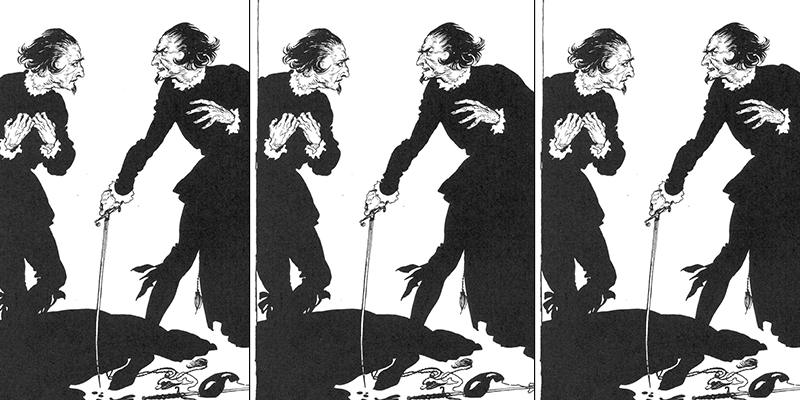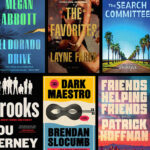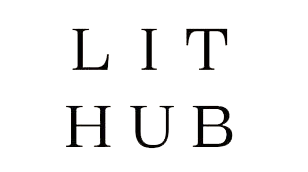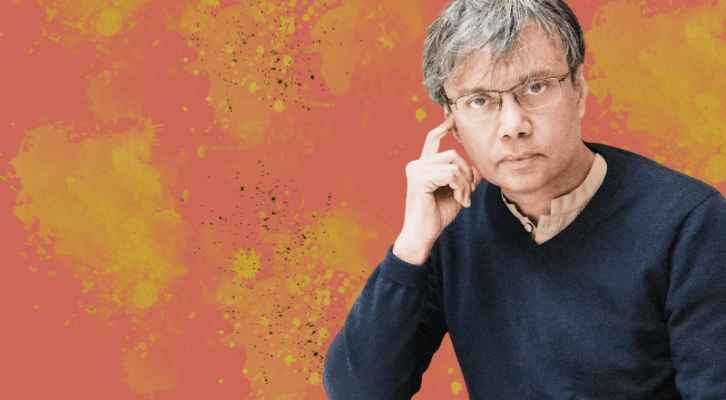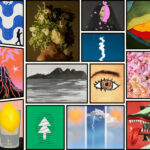In Ralph Milne Farley’s 1935 sci-fi story The Man Who Met Himself, the protagonist Richard Withrick encounters a ten-years-older version of himself who has time-traveled back to warn him of his own future. A full ninety years ago, this is an early instance of the double in time travel fiction, but the concept of the doppelganger has much deeper roots and has since become a mainstay of sci-fi throughout the last century. From The Prestige to Marvel’s millions of multiversal Spidermen, bumping into another version of yourself is a trope that looms large over the history of the genre. But why are we so fascinated with it?
One of the first examples can be found in Edgar Allan Poe’s 1839 short story William Wilson, in which the narrator is haunted throughout his life by a double who shares his name and appearance, subtly undermining and disrupting his actions at every turn. Indeed, more often than not, when a double appears, it is usually antagonistic: some kind of evil version of the main character who has set out to destroy them. There are obvious commentaries here to be made about the duality of man and the literalization of our self-destructive tendencies, but as I was writing my latest book, Extremity, I found that the role of the double had taken on new meaning for me in our globalized, late-stage capitalist, climate-crisis twenty-first century.
The world has undergone fundamental changes since the days of Farley and Poe. We’re all part of a global network now, whether we like it or not. It’s impossible for our existence not to have an impact. When I go to the shop to buy bananas, I am, in some small capacity, contributing to a supply chain that runs from my home in Scotland across the Atlantic to South America and the Caribbean. Even as I type this piece, the parts inside my laptop are the product of a factory in Taiwan; the energy it uses causes ripples in the global climate; the data being collected (because data is always being collected) impacts the algorithms of hundreds of machines in devices in almost every pocket on the globe.
In her wonderful essay, The Second Body, Daisy Hildyard recognizes this, arguing that “You have an individual body in which you exist, eat, sleep and go about your day-to-day life. You also have a second body which has an impact on foreign countries and whales.”[1] This truth is made more intense by the knowledge that we are in the midst of a man-made climate catastrophe. We’re all aware of it. It is inescapable. We know that when we fly on planes or turn on the kettle, we are contributing to it. It’s become so intrinsically part of the modern zeitgeist that it has created a new kind of identity: one in which you are no longer an individual. You have to be all over the planet. You are all over the planet.
But it’s not as easy as that. We’re animals. We’ve evolved to exist in this discrete form we call a body, and to live in small, tight-knit communities. It’s hard to always be thinking that turning on your bathroom light is an act of global impact. For most of us, we accept the reality of the climate crisis, but we do not always act as if we do. It’s too distant; too unreal. Academic Timothy Clark calls this a ‘derangement of scale’ – a disorientation that comes from the huge gap between the immensity of humanity’s global existence and your own tiny little life [2]. In some ways, it reminds me of a Lovecraftian cosmic horror: a beast too large to be comprehended, too much for the human mind to grapple with. Because it is a kind of horror, isn’t it? Not the end of the world—no, that’s a little too difficult to conceptualize—but the fact that you might be causing it just by being you, just by your body existing.
And so back, then, to speculative fiction, and back to doppelgangers. When I started to write Extremity, I knew I wanted to write a book about the various ways humanity has screwed itself, from wealth disparity and capitalism to our climate and our continually denigrating sense of self. At first, I didn’t know why the antagonists were clones. They just showed up in the text, causing havoc, being evil, and heralding the end of days. It wasn’t until later that I realized what they were: they were the ‘second bodies’. They were the horror of finding out that not only is this world screwed, but you were the one who did it, and you didn’t even know, not until you looked up at the screen and saw your own face staring back at you. We’re in a new age of doppelgangers, I think, where no longer is the evil twin just a representation of the battle inside of us, but of the damage we do purely by being.
It’s important for me to note that this piece, and indeed the book, was never meant to be an accusation (though I do have some accusatory things to say to some of the mega-billionaires). It’s not meant to make anyone feel guilty as much as it is to recognize how pervasive that guilt is. It’s a recognition of how terrifying it is to live in a world like this. As Hildyard puts it, “Your body is not inviolable. Your body is infecting the world – you leak.” Some days, I feel that with every step I take.
[1] Hildyard, Daisy. (2017) The Second Body. Fitzcarraldo Editions.
[2] Clark, Timothy. (2012) “Derangements of Scale.” Telemorphosis: Theory in the Era of Climate Change. Vol. 1. Ed. Tom Cohen. Michigan: Open Humanities.
___________________________________________

